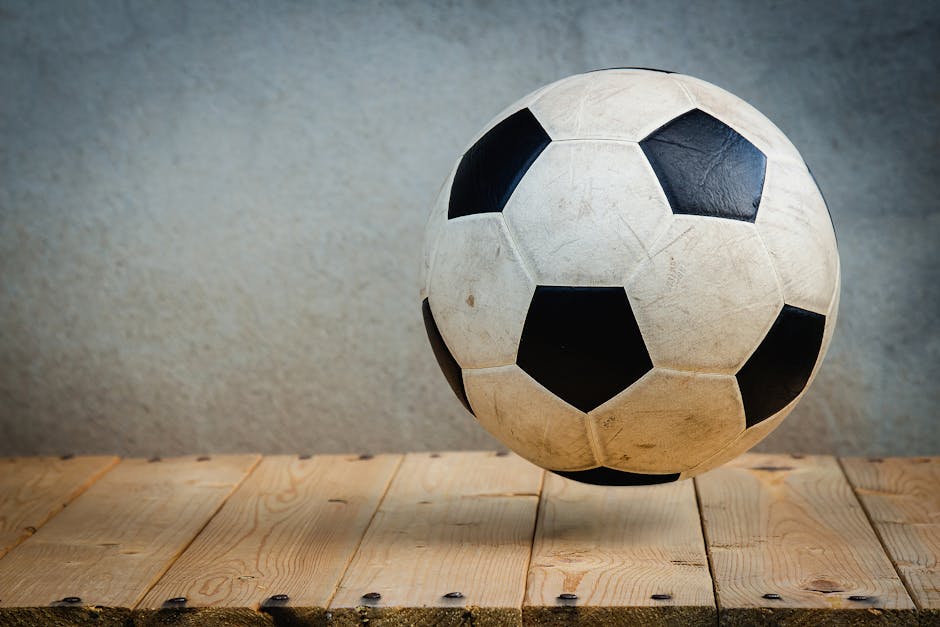Introduction
Every soccer player, from beginner to professional, can benefit from practicing a well-designed soccer cone drill. These simple yet highly effective exercises sharpen control, improve speed, and simulate real game movements. By dedicating time to structured drills with cones for soccer, players develop confidence on the ball while boosting agility and endurance.
This article focuses on field or larger space setups, where 6–12 cones and 10–20 yards of open ground are available. With these conditions, players can train at game-like intensity. You’ll find 15 detailed cone drills, along with setup instructions, coaching tips, and progressions to keep practice engaging and challenging.
If you’re serious about pushing your game further, don’t stop here. Check out The ultimate individual soccer training guide for a complete blueprint to sharpen your skills, build confidence, and dominate every match.
Benefits of a soccer cone drill
Training with cones may look simple, but the impact is massive. A soccer cone drill provides consistent repetition, allowing players to refine skills in a controlled setting. Here are the main benefits:
Improved ball control
Drills force players to take repeated touches, using both feet and multiple surfaces. Over time, this improves comfort and control, especially under pressure.
Faster decision-making
Cone setups simulate defenders and tight spaces. Players learn when to cut, accelerate, or pass, which translates into quicker decisions during matches.
Better agility and coordination
Sharp turns, slaloms, and stop-start movements mimic real soccer scenarios. Regularly performing drills with cones for soccer enhances coordination and balance.
Conditioning in game context
Unlike running laps, cone drills improve fitness while staying ball-centered. Players work on stamina, speed, and recovery without losing the connection to technical skills.
Solo training flexibility
Cone drills don’t require a full team. A ball and a few cones are enough to complete a productive training session anywhere with space.
How to set up your soccer cone drill
A proper setup ensures smooth practice and maximizes training efficiency.
Equipment needed
- 6–12 cones (or markers if cones aren’t available).
- One soccer ball.
- Optional: rebounder, wall, or training partner for passing-based drills.
Spacing recommendations
- Most drills work best with cones 10–20 yards apart.
- Cones for slalom and weaving should be 2–4 yards apart.
- Square and box drills typically use 5–10 yard spacing.
Warm-up suggestions
Start with 5–7 minutes of light jogging, high knees, butt kicks, and dynamic stretches. Then move into basic dribbling patterns around cones before starting the main drills.
Safety tips
- Use flat surfaces (grass, turf, or smooth ground).
- Allow enough space between players if training in groups.
- Avoid drills when cones may slip or the ground is uneven.
Tips for getting the most out of training
Training with cones only pays off when approached with focus. Here are tips to maximize value from each soccer cone drill:
- Use both feet equally. Don’t favor your dominant side. Work on weaknesses until they feel natural.
- Start slow, then add speed. Technique comes first. Once accuracy is consistent, gradually increase intensity.
- Add challenges. Time your runs, compete against a partner, or limit the number of touches.
- Track progress. Record completion times or number of mistakes to monitor improvement.
- Stay game realistic. Perform drills at match intensity and visualize defenders or game scenarios.
Step-by-step guide to 15 soccer cone drill workouts
This section includes the core of the guide: 15 practical drills with cones for soccer. Each drill lists setup, instructions, focus points, and optional progressions.
Drill 1: Zig-zag dribbling
Setup:
Place 6–8 cones in a zig-zag, 5–6 yards apart.
Instructions:
Dribble through the cones using both feet. Focus on tight control, then accelerate after the final cone with a sprint or pass to the wall.
Focus:
Close control, quick turns, and acceleration.
Progression:
Add weak-foot only rounds or limit touches between c
Drill 2: Cone gate passing
Setup:
Place 2–3 pairs of cones two yards apart to form “gates,” positioned 5–10 yards from a wall or rebounder.
Instructions:
Pass the ball through a gate so it hits the wall, control the rebound, then quickly move to another gate and repeat the pass. Continue rotating through gates.
Focus:
Passing accuracy, first touch, and quick movement after the pass.
Progression:
Set a timer and challenge yourself to complete as many accurate passes through different gates as possible within 60 seconds.
Drill 3: Figure-8 dribble
Setup:
Two cones, 6–8 yards apart.
Instructions:
Dribble around both cones in a continuous figure-8 pattern, accelerating through turns.
Focus:
Sharp turns, inside/outside touches, agility.
Progression:
Add a time limit for completing a set number of figure-8s. Or add a wall pass after each loop before continuing.
Drill 4: 5-Cone weave + sprint
Setup:
Five cones in a straight line, each 3–4 yards apart.
Instructions:
Weave through cones, then sprint 10–15 yards at the end.
Focus:
Dribbling rhythm followed by explosive acceleration.
Progression:
Add a ball control move before sprinting, such as a feint.
Drill 5: Dribble & turn circuit
Setup:
Four cones forming a square, 10 yards apart.
Instructions:
Dribble to each cone and perform a turn (inside cut, outside cut, drag back, Cruyff turn). Continue around the square.
Focus:
Variety of turns, ball protection.
Progression:
Randomize the order of turns or increase square size for fitness focus.
Drill 6: Shuttle dribbling
Setup:
Line up 3–5 cones, 5 yards apart.
Instructions:
Dribble to the first cone, back to the start, then to the second cone, and so on.
Focus:
Endurance, repeated sprints, recovery control.
Progression:
Perform with limited touches or under timed pressure.
Drill 7: Passing wall drill (with cone gate)
Setup:
A cone gate (two cones, 2 yards apart) 5–10 yards from a wall or rebounder.
Instructions:
Pass through the gate to the wall, control the rebound, and repeat.
Focus:
Passing precision, one-touch play.
Progression:
Use weak foot only or try one-touch returns.
Drill 8: Y-passing pattern
Setup:
Arrange 3 cones in a Y-shape facing a wall.
Instructions:
Pass the ball to the wall through one side cone, move diagonally to the other cone, and receive back through the middle.
Focus:
Angled passing and movement after the pass.
Progression:
Add one-touch passes or reduce space between cones.
Drill 9: Cone ladder dribble
Setup:
Place 8–10 cones in a straight line, 2 yards apart.
Instructions:
Dribble through like a ladder, weaving in and out quickly. After the last cone, sprint or pass to the wall.
Focus:
Dribbling rhythm and coordination.
Progression:
Increase speed each round or add weak-foot only dribbling.
Drill 10: Speed dribble channels
Setup:
Two parallel lines of cones, 2 yards wide, 15–20 yards long.
Instructions:
Sprint dribble down the channel, keeping the ball under control but moving quickly.
Focus:
Pushing ball ahead, maintaining speed with control.
Progression:
Add a timed challenge or include a finish with a pass/shot.
Drill 11: Stop-and-go drill
Setup:
Line of cones, 5 yards apart.
Instructions:
Sprint dribble to each cone, stop ball completely, then re-accelerate.
Focus:
Stop-start explosiveness, acceleration.
Progression:
Alternate stop types (sole stop, inside cut stop).
Drill 12: Box-to-box circuit
Setup:
Two 5×5 yard cone boxes, 10 yards apart.
Instructions:
Dribble inside one box, exit with a turn, sprint to the second box, repeat.
Focus:
Transitions, control under fatigue.
Progression:
Add a timed limit for each box.
Drill 13: Cone diamond dribble
Setup:
Four cones in diamond shape, 8 yards apart.
Instructions:
Dribble around each cone in sequence, using inside and outside touches to stay sharp on angles.
Focus:
Directional dribbling, angled ball control.
Progression:
Increase diamond size for more conditioning.
Drill 14: “U” passing drill
Setup:
Place three cones in a “U” shape, each side about 6–8 yards. Position the open end of the “U” facing a wall or rebounder.
Instructions:
Pass the ball against the wall through one side of the “U,” control the rebound, then move quickly around the cone to the opposite side and repeat. Continue alternating sides to mimic give-and-go movement.
Focus:
Passing accuracy, first-touch control, and movement off the ball.
Progression:
Limit to one-touch passes through the cones or increase speed by setting a timer and tracking how many passes you can complete in 60 seconds.
Drill 15: Combination dribble course
Setup:
Arrange 8–10 cones in a custom path with zig-zags, slalom patterns, and wider turns. If space allows, include a final cone near a wall to finish with a pass.
Instructions:
Dribble through the course while combining multiple techniques: inside/outside touches, step-overs, quick turns, and sudden stops. At the final cone, make a controlled pass against the wall, then restart.
Focus:
Game-like ball control, decision-making under pressure, and endurance.
Progression:
Complete the course under timed conditions and track your improvement, or challenge yourself to finish with only weak-foot touches.
Sample training session (Using the drills)
Here’s a 45-minute session built from the drills above.
- Warm-Up (5 minutes): Light dribbling + dynamic stretches.
- Technical Focus (15 minutes): Zig-zag dribbling, Figure-8 dribble, Cone gate passing.
- Conditioning Focus (15 minutes): Shuttle dribbling, Stop-and-go drill, Box-to-box circuit.
- Finisher (5–10 minutes): Combination dribble course at maximum effort.
This balance ensures skill improvement and physical conditioning.
Common mistakes to avoid
Many players lose focus when practicing drills with cones for soccer. Here are mistakes to avoid:
- Dribbling too fast too soon. Control should come before speed.
- Only using the dominant foot. Train weaknesses equally.
- Poor body positioning. Stay low, balanced, and use arms for control.
- Skipping rest. Overtraining reduces effectiveness and increases injury risk.
Who can benefit from these drills
Cone drills are versatile and serve many levels of players:
- Youth players: Learn basics in a structured way.
- Competitive athletes: Sharpen technical skills under intensity.
- Coaches: Ready-to-use exercises for team sessions.
- Casual players: Improve fitness while keeping training fun.
Whether for development or match preparation, each soccer cone drill contributes to overall growth.
Elevate your game with soccer cone drill training
Practicing a structured soccer cone drill improves ball mastery, speed, and game intelligence. With 15 proven drills in this guide, you can design effective sessions for yourself, your team, or your players. Consistency is key; small improvements compound over time.
Next time you’re at the field, set up 6–12 cones and dedicate 30–45 minutes to focused training. You’ll notice sharper control, quicker decision-making, and improved fitness within weeks.
Consistency is the secret to turning drills into real match impact. If you’re ready to take the next step, explore The ultimate individual soccer training guide and unlock a proven path to becoming the best version of yourself on the field.

FAQ
How often should I practice a soccer cone drill?
Two to three sessions per week bring steady progress without overtraining.
Do I need professional cones?
No. Any markers work, but cones provide visibility and structure.
How long should a session last?
Thirty to forty-five minutes is ideal for focus and endurance.
Can I do these drills alone?
Yes, most require only a ball and cones. Passing drills may use a wall.
Are cone drills good for fitness?
Absolutely. They combine agility, speed, and endurance in game-like conditions.
